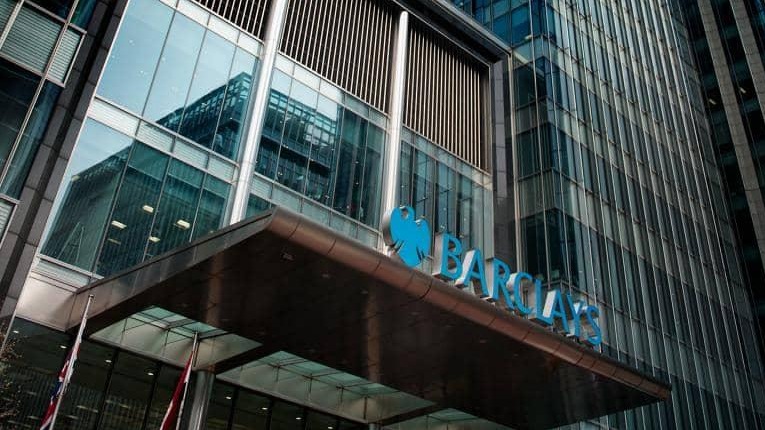HSBC UK is set to close 82 branches across the UK as a result of the consumer shift to digital and online banking.
The UK division of the global banking group said that the closures, which are scheduled to take place throughout 2021, will reduce the number of branches to 511.
Announcing the move, HSBC said the changes to the branch network “reflect local market trends, customer behaviour and branch usage.”
The change comes amid a significant shift in the way UK consumers access banking and financial services during the COVID-19 pandemic, with banking app and online engagement rising sharply across the industry.
Stripping out any impact of the pandemic, HSBC said the number of customers using branches has fallen by a third in the last five years.
Nine in ten (90 per cent) of all customer contact with us is over the phone, internet or smartphone, in addition to the bank’s customer service staff talking to over 100,000 customers a week on social media.
HSBC said the move would help to ensure that existing branches are fit for the “long-term future” as part of part of the bank’s wider strategy of becoming a “market-leading digital bank.”
Of the branches selected for closure, 81 are within one mile of a Post Office, where customers can carry out day-to-day transactions, two-thirds are within five miles of another HSBC branch and nine in ten are within 10 miles.
The plan will lead to further significant investment and the creation of four distinct branch formats, designed to provide local areas with the banking facilities that best suit customer needs, based on detailed analysis of customer behaviour.
The new branch formats will be:
Full Service Branch: offering a full range of services, predominantly based within large cities and towns where branches see a broad range of requests.
Cash Service Branch: supporting local communities that are more cash intensive with a greater need for access to cash, alongside simple over-the-counter servicing and the ability to deal with more complex issues such as bereavement and Power of Attorney.
Digital Service Branch: counterless branches providing ‘traditional’ cash and cheque transactions using self-service technology, with an emphasis on assisting with digital technology adoption and product fulfilment alongside other more complex, non-standard service requests.
Pop up branches, which are also due to be rolled out later in 2021 will provide: a temporary, movable, local presence that is flexible and agile, helping customers with ‘in the moment’ queries including help setting up and resetting online and digital banking, providing digital education, guidance and customer support.
Jackie Uhi, HSBC UK’s head of network said: “Over the last few months, we’ve been conducting a number of pilots to test out a range of potential future branch formats at different locations to make sure we are giving customers what they want where they want it.
"Our findings have led us to create four new and distinctive formats that we believe will be well-suited to serve the different local markets that we operate in, with a branch network that is fit for the future.
“We know there will always be a need for face-to-face customer support and the evolution of our branches very much takes that into account.”
She explained that in recent years HSBC had introduced more digital options such as depositing cheques or putting a temporary block on a card, and said that customers are becoming more comfortable primarily using online and mobile banking to take control of their finances while turning to other channels for very particular interactions.
“Giving more and better options to enable customers to manage their finances, including self-service, has uncovered a latent demand,” she said. “The direction of travel is really quite clear and this is borne out by the reduction in branch usage and increase in digital interaction that we are seeing first-hand,” Uhi added.
“The Covid-19 pandemic has emphasised the need for the changes that we are making. It hasn’t pushed us in a different direction but reinforces the things that we were focusing on before and has crystalised our thinking. This is a strategic direction that we need to take to have a branch network fit for the future.”
Latest News
-
What’s next for financial services technology in 2026?
-
The most read FStech stories of 2025
-
Post Office to operate Banking Hubs for 5 more years
-
PSR takes action to boost transparency in card processing fees
-
Visa launches voice-enabled agentic commerce service in UAE
-
ABN Amro completes first international blockchain-based SDC transaction
Creating value together: Strategic partnerships in the age of GCCs
As Global Capability Centres reshape the financial services landscape, one question stands out: how do leading banks balance in-house innovation with strategic partnerships to drive real transformation?
Data trust in the AI era: Building customer confidence through responsible banking
In the second episode of FStech’s three-part video podcast series sponsored by HCLTech, Sudip Lahiri, Executive Vice President & Head of Financial Services for Europe & UKI at HCLTech examines the critical relationship between data trust, transparency, and responsible AI implementation in financial services.
Banking's GenAI evolution: Beyond the hype, building the future
In the first episode of a three-part video podcast series sponsored by HCLTech, Sudip Lahiri, Executive Vice President & Head of Financial Services for Europe & UKI at HCLTech explores how financial institutions can navigate the transformative potential of Generative AI while building lasting foundations for innovation.
Beyond compliance: Building unshakeable operational resilience in financial services
In today's rapidly evolving financial landscape, operational resilience has become a critical focus for institutions worldwide. As regulatory requirements grow more complex and cyber threats, particularly ransomware, become increasingly sophisticated, financial services providers must adapt and strengthen their defences. The intersection of compliance, technology, and security presents both challenges and opportunities.
© 2019 Perspective Publishing Privacy & Cookies













Recent Stories